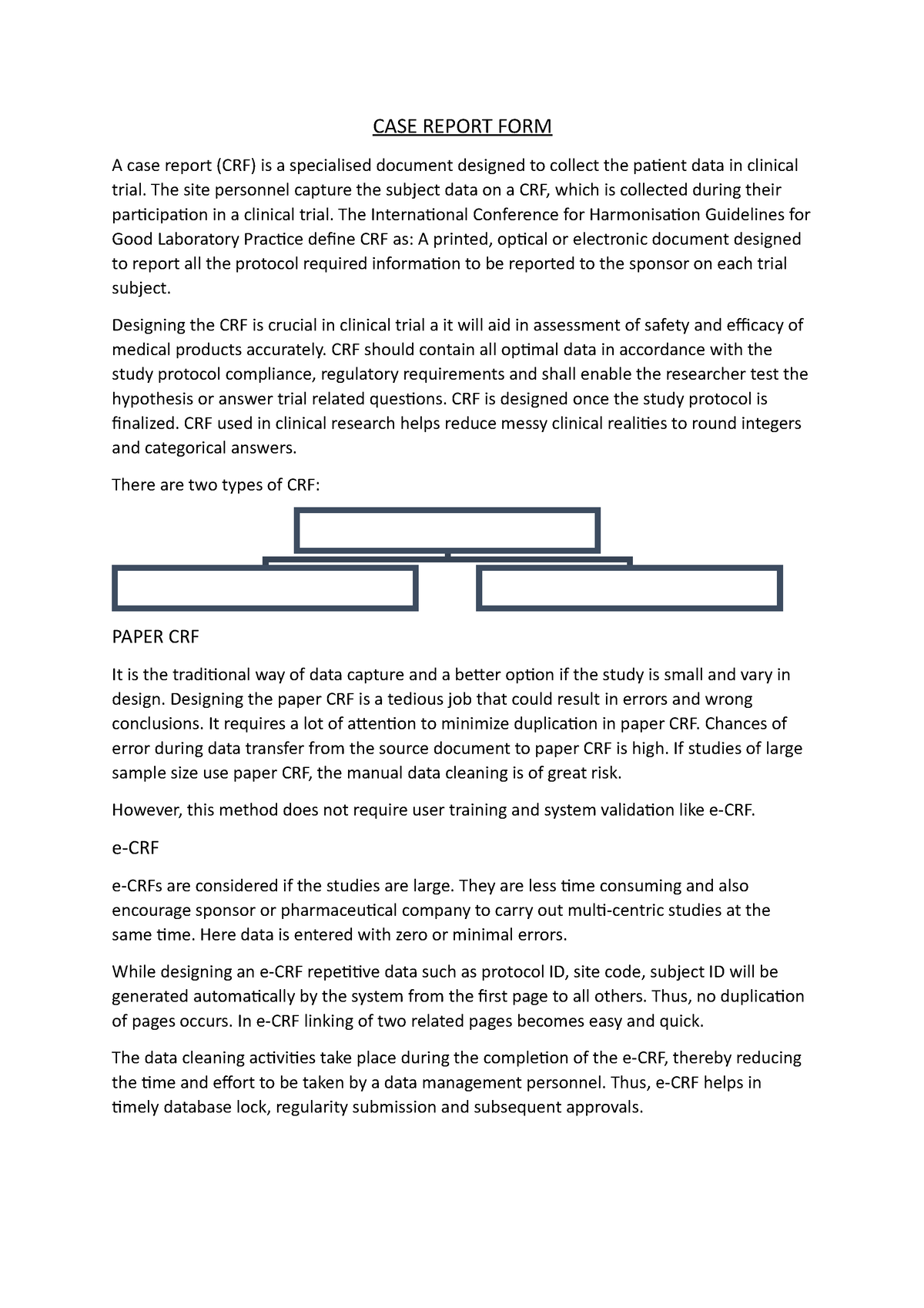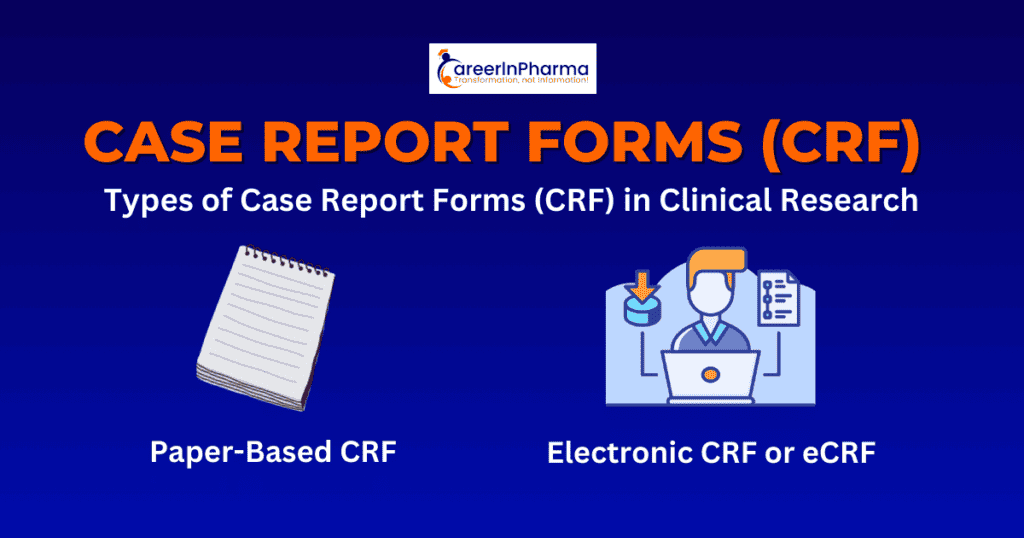The CRF Case Report Form Templates You’ll Ever Need: A Comprehensive Guide
Clinical trials are the backbone of medical advancement, and at their heart lies the Case Report Form (CRF). These meticulously designed documents are the primary source of data, capturing every detail of a patient’s journey through a clinical study. Designing and implementing effective CRFs is crucial for data integrity, regulatory compliance, and ultimately, the success of the trial itself. This guide provides a comprehensive overview of CRF templates, equipping you with the knowledge and resources to streamline your data collection process.
What is a CRF (Case Report Form)?
Before diving into templates, let’s clarify the basics. A CRF is a structured document used in clinical trials to record all the information about each participant. This includes:
- Demographics: Age, gender, ethnicity, etc.
- Medical History: Previous conditions, medications, and allergies.
- Treatment Information: Dosage, frequency, and duration of the study drug.
- Adverse Events: Any undesirable medical occurrences.
- Laboratory Results: Blood tests, urine analysis, and other diagnostic data.
- Efficacy Assessments: Measures of the drug’s effectiveness.
- Physical Examinations: Vital signs, etc.
The CRF acts as the primary source of data that is analyzed to determine the safety and efficacy of the investigational product.
Types of CRF Templates: Choosing the Right One
The choice of CRF template depends heavily on the nature of the clinical trial, the therapeutic area, and the specific data points required. Here’s a breakdown of common template types:
- Paper-Based CRFs: Historically, these were the standard. While still used in some settings, they are increasingly being replaced by electronic versions. They involve manual data entry and are prone to errors.
- Electronic Data Capture (EDC) Systems: The modern standard. EDC systems offer significant advantages:
- Real-time Data Entry: Data is entered directly into the system, reducing the need for manual transcription.
- Data Validation: Built-in checks and edit checks prevent errors and inconsistencies.
- Improved Data Quality: Automated data validation and edit checks enhance data accuracy.
- Faster Data Analysis: Data is readily available for analysis, speeding up the research process.
- Regulatory Compliance: EDC systems are designed to meet regulatory requirements.
- Specific Disease-Area Templates: Many organizations offer pre-built templates tailored to specific therapeutic areas (e.g., oncology, cardiology, neurology). These templates often include standardized questions and data fields, streamlining the CRF design process.
Key Components of an Effective CRF Template
Regardless of the format, a well-designed CRF template should incorporate these essential elements:
- Clear and Concise Questionnaires: Questions should be easy to understand and answer, using plain language and avoiding jargon.
- Standardized Data Fields: Use consistent data formats (e.g., date format, units of measurement) to ensure data comparability.
- Logical Flow and Organization: Group related questions together and arrange them in a logical sequence.
- Edit Checks and Validation Rules: Implement automated checks to identify errors, inconsistencies, and missing data.
- Instructions and Guidance: Provide clear instructions on how to complete each section and define any specific terminology.
- Version Control: Maintain a record of all CRF versions and revisions.
- Compliance with Regulations: Ensure the CRF meets all relevant regulatory requirements (e.g., FDA, EMA).
Accessing and Utilizing CRF Templates
Finding the right CRF template is often the first step. Here are some resources:
- EDC System Providers: Most EDC system providers offer pre-built templates or the ability to create custom templates.
- CROs (Contract Research Organizations): CROs often have extensive libraries of CRF templates and can provide expert guidance on CRF design.
- Industry Standard Libraries: Organizations like CDISC (Clinical Data Interchange Standards Consortium) provide data standards and templates.
- Therapeutic Area Specific Resources: Professional societies or disease-specific organizations may offer templates or guidelines.
Optimizing Your CRF Design for Data Integrity
Creating a robust CRF is a continuous process of refinement and improvement. Here are some tips to maximize data integrity:
- Involve Stakeholders: Include input from clinicians, data managers, statisticians, and regulatory experts during the design phase.
- Pilot Test Your CRF: Conduct a pilot test with a small group of participants to identify any usability issues or areas for improvement.
- Train Site Personnel: Provide thorough training to site personnel on how to complete the CRF accurately and consistently.
- Regular Monitoring and Quality Control: Implement a system for regular monitoring and quality control to ensure data quality and identify any potential problems.
- Feedback and Revisions: Be prepared to revise your CRF based on feedback and evolving needs.
Conclusion: The Foundation of Clinical Trial Success
The CRF is more than just a form; it’s the cornerstone of clinical trial data collection. By understanding the different types of templates, incorporating key components, and implementing best practices, you can create CRFs that are accurate, reliable, and compliant. This will contribute to the success of your clinical trial and ultimately, to the advancement of medical knowledge. By embracing the right CRF template and a commitment to data integrity, you can pave the way for groundbreaking discoveries and improved patient outcomes.
Frequently Asked Questions (FAQs)
What are the benefits of using an EDC system over paper-based CRFs? EDC systems offer numerous advantages, including real-time data entry, automated data validation, improved data quality, faster data analysis, and enhanced regulatory compliance.
How do I choose the right CRF template for my clinical trial? The choice depends on your trial’s nature, therapeutic area, and the data required. Consider using pre-built templates from EDC providers, CROs, or industry standard resources.
What are the key elements of a well-designed CRF? A well-designed CRF should include clear and concise questionnaires, standardized data fields, a logical flow, edit checks, instructions, version control, and compliance with regulatory requirements.
Are there any specific regulations related to CRF design? Yes, CRF design must comply with relevant regulations, such as those set by the FDA (in the US) and EMA (in Europe), as well as guidelines like GCP (Good Clinical Practice).
How can I ensure data integrity when using a CRF? Involve stakeholders, pilot test your CRF, train site personnel, implement regular monitoring, and be prepared to revise the CRF based on feedback.




